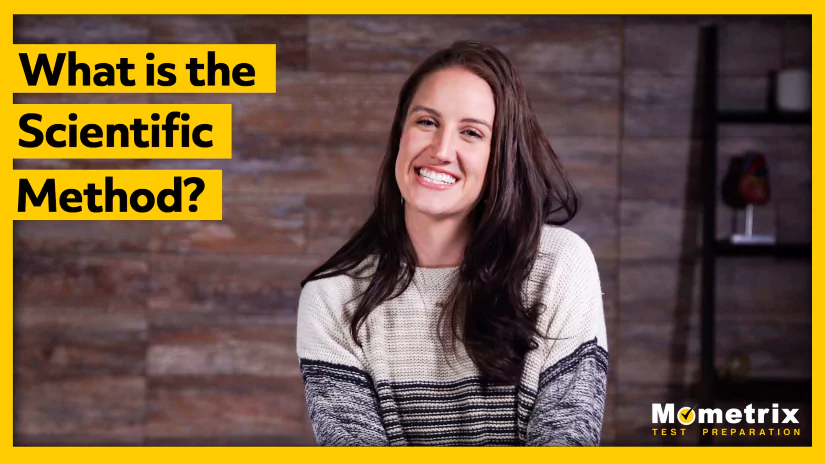
Hey guys! Welcome to this Mometrix video on the scientific method.
Before we dive into the what, let’s first, talk about the why. Why do we need the scientific method?
Why Do We Need the Scientific Method?
Well, there are numerous reasons why there should be a method behind why we do anything!
There needs to be consistency, there needs to be a logical flow, there ought to be consensus, and the experiment must be able to be replicated. If everyone were to just do their own thing, then there would inevitably be fabricated scientific research posing as facts, lacking any consistency.
Scientific Method Steps
1. Observe
The first step in the scientific process is to make an observation. All scientific investigations start because someone observed something that happened, and it stirred up their curiosity. For example, Isaac Newton observed and experienced an apple falling from its tree. It actually hit him on the head (at least, so the story goes). This observation eventually led him to ask questions.
2. Ask Questions
This leads us to the next step in the scientific process: ask a question. Questions help us hone in on the information that is actually worth investigation. A question Isaac Newton probably asked might have been “why do things always fall to the ground, and not go up?” Naturally, questions beg for an answer, and this takes us to our third step.
3. Make a Hypothesis
Propose an answer by developing a hypothesis. Generally, a hypothesis is defined as predicting an answer based on things that you already know, or an educated guess. With our apple falling from a tree problem, Isaac Newton probably had some experience that allowed him to formulate a hypothesis. Perhaps he had thrown a ball before and picked up on the fact that the ball generally goes in the direction that it is thrown due to the direction of the force. So, when it comes to formulating a hypothesis, you start with what you know.
Using Deductive Reasoning
When working to formulate your hypothesis, you ought to use deductive reasoning. This generally takes the form of an “if-then“ statement, where you move from a general truth to a specific. Something that is crucial, and must be noticed about an if-then statement is that 1) it is testable, and 2) it is refutable. Your hypothesis must contain these two qualities, or else it does not follow the scientific method.
4. Conduct Experiments
The fourth step in the scientific method is to conduct an experiment. This is the step where you test your hypothesis. When testing your hypothesis, the experiment must be controlled. You must control every single variable, so that you are able to study a single variable. This is where the terms independent and dependent variable come in to play. The independent variables are the variables that are controlled by the researcher or experimenter. The dependent variable is the variable that is left untouched by the experimenter and is observed and measured for any change.
The other thing that is crucial when controlling the experiment is having a control group and an experimental group. This allows for the researcher to be sure that his results are consistent, and not based on chance.
5. Draw a Conclusion
The fifth and last step in the scientific method is to observe your data and draw a conclusion. When analyzing the data collectively, you will have collected qualitative and quantitative data.
Qualitative data is data that represents information about qualities. For example, the color of a liquid, the smell of a substance, or maybe the softness of skin. These are all examples of qualitative data.
Quantitative data, on the other hand, is data that can be measured numerically. For example, the number of lashes on your eyelid, the height of a tree, or perhaps the time it takes for you to run a mile. These are all examples of quantitative data, or data that can be quantified.
As you analyze your data, you have to decide if the data you collected proves or disproves your hypothesis. This is where you draw your conclusion. The conclusion of your experimentation should answer your original question.
Thanks for watching, guys! I hope that this video gave you some clarity and allows you to walk away knowing more than you did when you started.
See you guys next time!
